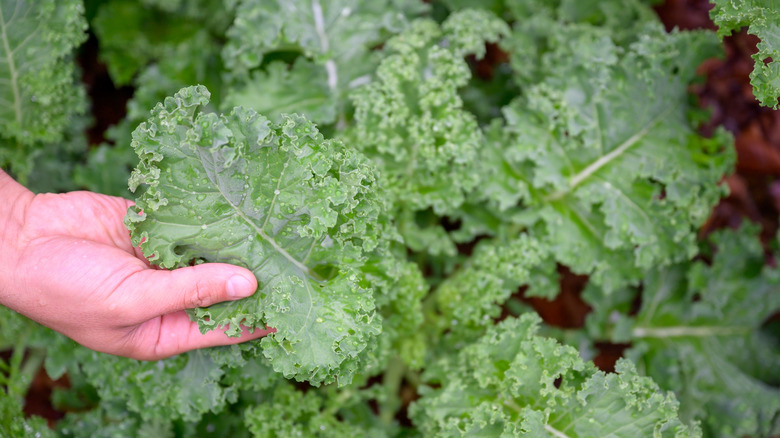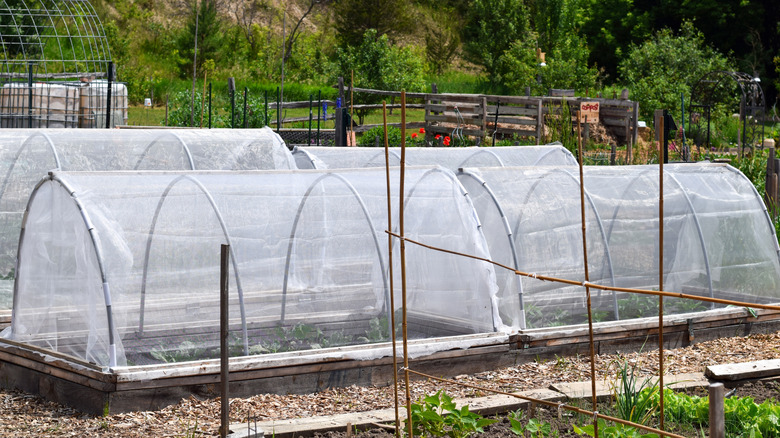The Easy Way To Naturally Keep Most Pests Away From Your Kale Plants
We may receive a commission on purchases made from links.
If you've started to notice holes, slimy trails, or curling yellow leaves in your kale plants, chances are you might be dealing with some unwanted pests. Kale is especially susceptible to pests, as they belong to the insect-loving Brassica family, which includes other tasty veggies like broccoli and cauliflower. A successful way to stave off insects from your kale is to use preventative measures, like floating row covers. The sooner you can incorporate lightweight covers into your garden, the less likely it is that your kale plants will become infected, and you won't have to resort to other methods to get rid of the pests, like using harmful pesticides.
Kale plants can be home to a number of pests, from beet armyworms and cabbage aphids to cabbage loopers and diamondback moths. These insects can not only feed on your crops, but also can leave holes and discoloration behind. Some, like cutworms, feed on the stems of seedlings near the soil, while cabbage aphids can halt plant growth completely. While you can always treat these pests with insecticides if the population is already present, you can also start the pest control process early by adding covers to your garden. Not only is this an inexpensive treatment, but it can keep your plants from other harm, like frost or extreme heat.
How to add floating row covers to your kale plants
Floating row covers are quick, affordable, and easy to find compared to expensive pesticides or tedious insect removal. They protect your plants from pests while allowing necessities like sunlight and water to come through. These covers should be added to your plants immediately after adding seeds to the soil. If your plants already have an infestation of insects, do not use a floating plant cover, as you most likely will be trapping the insects inside. Floating covers can also extend the growing season by protecting your plants from frost and heat.
You don't need to spend a ton of money on sourcing your materials. You can find rolls of plant covers for as little as $15, like AgFabric's Floating Row Cover available at Home Depot. These lightweight fabric covers are usually made of polyester or polypropylene and have varied thickness depending on what types of plants you are protecting. To add these covers to your seedlings, simply cut the fabric to size, leaving extra room on the sides for growth, and drape it over your plants.
When used for pest control, it's important to note that the edges will need to be long enough to cover the entire plant and be held down to the ground with a heavy object like a brick or piece of lumber. As your kale matures, consider using PVC pipes to stretch over the leaves so the fabric doesn't weigh down on the delicate vegetable itself.

